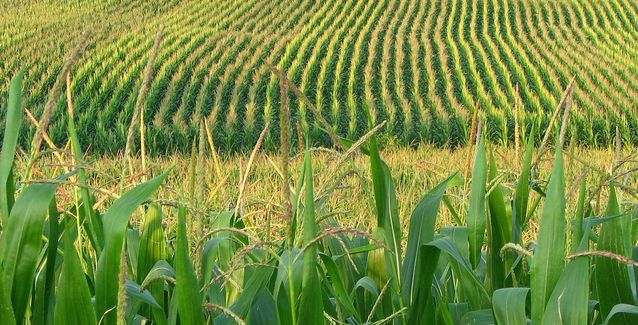Hurricane Delta deluges farmers in the midst of harvest season
by October 12, 2020 10:11 am 707 views

Farmers throughout the Arkansas Delta had to grapple with the remnants of Hurricane Delta during the weekend. The storm dumped inches of rain on agriculture fields throughout the region during the heart of harvest season.
Some counties in the region received five inches or more of rain from the storm after two weeks of relatively dry and cooler weather, according to the National Weather Service.
The Laura weather system — first a hurricane, then a tropical storm — pushed through Arkansas in late August, and slowed both the Arkansas sorghum and corn harvests, which had already begun, and effectively delayed the beginning of the rice harvest. Between Sept. 21-22, nearly the entire state received between a half inch and five inches of rain, followed by a week in which the southeastern corner of the state received an additional five to six inches of rain.
Despite the periods of turbulent weather, Arkansas producers have made strong gains in harvesting rice, corn and soybeans, with each commodity seeing 10% or more of its respective total acreage harvested over the past week alone. About 86% of the state’s corn acreage had been harvested, according to the U.S. Department of Agriculture’s National Agricultural Statistics Service. That puts growers still behind the five-year average of 96% by this point in the season, but within sight of the crop’s last leg.
Jason Kelley, extension wheat and feed grains agronomist for the University of Arkansas System Division of Agriculture, said corn producers in the state are trying to wrap harvest up this week.
“We are more than 90% done at this point, and we would make a good push at nearing completion without the rain that Delta is bringing,” Kelley said. “Corn that has not been harvested yet really needs to miss this rain and wind, as many fields are lodging and will be more difficult to harvest if we get wind from Delta.”
The rains stopped winter wheat planting. Prior to the rains, the state’s wheat crop was expected to add acres this year due to higher grain prices, but the window to plant is now narrower, Kelley added.
About 70% of the state’s rice acreage had been harvested as of Oct. 4, according to NASS, with growers making the most of the first week of the month. Jarrod Hardke, extension rice agronomist for the Division of Agriculture, said last week’s above-average temperatures aided progress.
“We’re making excellent progress on rice harvest right now,” Hardke said. While we’re still behind the five year average, we should have over 80 percent of rice harvested by the time Hurricane Delta reaches the state. If the upper two-thirds of eastern Arkansas can avoid major rainfall amounts, we have an excellent long-range forecast after Delta leaves to try and finish harvest on a high note.”
Soybean producers were still seeing the effects of saturated soils, however. Jeremy Ross, extension soybean agronomist for the Division of Agriculture, said the fields would need additional time to dry from September’s penetrating rains.
“On the soybean side, we just need some dry weather to get the crop harvested,” Ross said. “Prolonged periods of wet, cloudy weather could have some quality issues. We have seen some quality issues after Tropical Storm Laura, but most everything looks good so far.”
Of the state’s major commodity crops, cotton has struggled the most this season. As of Oct. 4, only 13% of the state’s total acreage had been harvested, well behind the five year average of 29% of acreage typically harvested by this point in the season.
“Cotton harvest statewide has just gotten rolling this week, and should be 20% complete as the rain bands from Hurricane Delta arrive,” Bill Robertson, extension cotton agronomist for the Division of Agriculture, said. “This time last year, we were over 50% harvested.”
Weather conditions could be advantageous to farmers in the coming days. NWS projects few chances of rain during the next week with mostly dry conditions. Highs are expected in the upper 70s with lows in the upper 40s.
“We need mother nature to be a little more kind to us,” he said.
